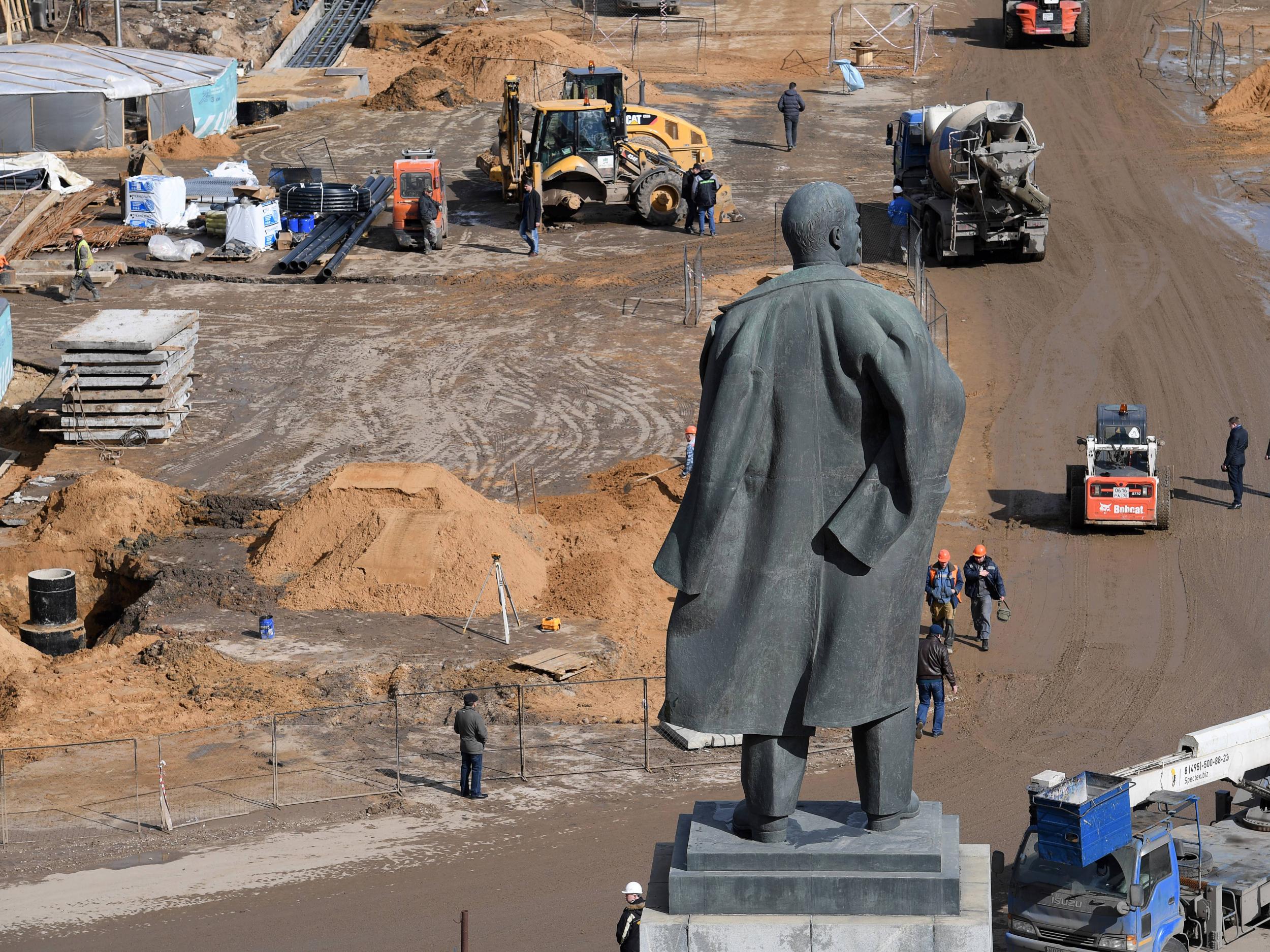Lenin knew that revolution wouldn't happen overnight – we must bear this in mind as capitalism fails us today
While the leftist resistance against global capitalism fails again and again to undermine its advance, it remains strangely out of touch with many trends which clearly signal capitalism’s progressive disintegration


Perhaps the key achievement of Lenin was that he silently dropped the orthodox Marxist notion of revolution as a necessary step in historical progress. Instead he followed Louis Antoine Saint-Just’s insight that a revolutionary is like a seaman navigating in uncharted territories.
This was Lenin’s answer to the big problem of western Marxism: how is it that the working class does not constitute itself as a revolutionary agent? Western Marxism, at the time, was in a constant search for other social agents who could play the role of the revolutionary agent, as the understudy replacing the indisposed working class: third-world peasants, students and intellectuals; and the excluded … up to the refugees hailed today by some desperate leftists as “nomadic proletarians”.
This failure of the working class as the revolutionary subject is at the very core of the Bolshevik revolution: Lenin’s art was to detect the “rage potential” of the disappointed peasants. The October revolution won due to the slogan “land and peace,” addressed to the vast peasant majority, seizing the short moment of their radical dissatisfaction.

Lenin was thinking along these lines already a decade before, which is why he was horrified at the prospect of the success of the Stolypin land reforms, which aimed at creating a new strong class of independent farmers – he wrote that if Stolypin succeeded, the chance for a revolution would be lost for decades. All successful socialist revolutions, from Cuba to Yugoslavia, followed this model, seizing the opportunity in an extreme critical situation, co-opting the national-liberation or other “rage capitals.”
The point is not just that revolution no longer rides the train of history, following its laws – the problem is a different one. It is as if there is a law of history, a more or less clear predominant main line of historical development, and that revolution can only occur in its interstices, “against the current.”
One often opposes here the “decisionist” Lenin of 1917 to the Lenin of the last years of his life, a more pragmatic and realist Lenin desperately trying to institutionalise revolution in a much more modest way. However, what the two stances share is the ruthless will to grab power and then to hold it.
Lenin’s focus on taking power did not just express his desire for power, it meant much more: his obsession (in a good sense of the term) with opening up a “liberated territory,” space controlled by emancipatory forces outside the global capitalist system.
This is why any poetry of permanent revolutionising was totally alien to Lenin – when, after the defeat of the expected all-European revolution in the early 1920s, some Bolsheviks thought it would be better to lose power than to stick to it in these conditions, Lenin was horrified by this idea.
On the other hand, there was much more “utopianism” in Lenin’s efforts to fill the free space outside the capitalist system with new content – the paradox is that he was a pragmatist in how to grab power, and a utopian in what to do with it.
And we are today in a similar predicament. While the leftist resistance against global capitalism fails again and again to undermine its advance, it remains strangely out of touch with many trends which clearly signal capitalism’s progressive disintegration. It is as if the two tendencies (resistance and self-disintegration) move at different levels and cannot meet, so that we get futile protests in parallel with immanent decay and no way to bring the two together in a coordinated act of capitalism’s emancipatory overcoming.
How did it come to this? While (most of) the left desperately tries to protect the old workers’ rights against the onslaught of global capitalism, it is almost exclusively the most “progressive” capitalists themselves (from Elon Musk to Mark Zuckerberg) who talk about post-capitalism – as if the very topic of passage from capitalism as we know it to a new post-capitalist order is appropriated by capitalism.
Although Marx provided an unsurpassable analysis of the capitalist reproduction, his mistake was not just that he counted on the prospect of capitalism’s final breakdown, and therefore couldn’t grasp how capitalism came out of each crisis strengthened. There is a much more tragic mistake at work.
In the words of Wolfgang Streeck – Marxism was right about the “final crisis” of capitalism. We are clearly entering it today, but this crisis is just that – a prolonged process of decay and disintegration, with no easy Hegelian Aufhebung in sight, no agent to give this decay a positive twist and transform it into the passage to some higher level of social organisation.
In view of apocalyptic prospects of our near future, from ecological catastrophes to mass migrations, one should nonetheless follow Beckett’s line: “Try again. Fail again. Fail better.”
The true utopia is the idea that, if we go on within the existing global capitalist system, we can save ourselves. So we need more than ever Lenin’s spirit of radicalism combined with ruthless pragmatism.
Maybe one should take the risk to repeat here a classic Soviet joke: in an official Moscow gallery, there is a painting displayed titled “Lenin is in Warsaw” that depicts Nadhezda Krupskaya, Lenin’s wife, in her Kremlin room and engaged in wild sex with a young Komsomol member. A surprised visitor asks the guide: “But where is Lenin here?”, to which the guide calmly replies: “Lenin is in Warsaw.”
Let us imagine a similar exhibition in Moscow in 1980, with a picture with the same title depicting a group of top Soviet nomenklatura members debating the “danger” the Polish Solidarity movement presents to the interests of the Soviet Union. A surprised visitor asks the guide: “But where is Lenin?”, and the latter replies: “Lenin is in Warsaw.” In spite of Western interventions coordinated by the Pope and Reagan, etc, Lenin was in Warsaw in the 1970s and 1980s, his spirit was there in workers protests out of which solidarity grew.
Join our commenting forum
Join thought-provoking conversations, follow other Independent readers and see their replies
Comments